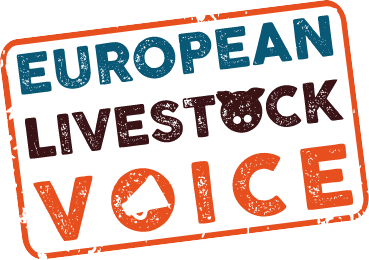Document type : Webinar report from the European Livestock Voice
Preview: During a lively debate on a very topical issue, speakers from different backgrounds were invited to first share their views on animal welfare and labelling. The manager of the farm team for Eurogroup for Animals Inês Ajuda, a trained vet, explained that animal health, sentient wellbeing and the ability to express natural and appropriate behaviours are all interlinked and all 3 pillars must be included when discussing animal welfare.
Trine Vig Tamstorf, chief policy advisor for animal health and welfare for the Danish Agriculture and Food Council, who was representing the European livestock and meat trades sector in this debate, added that animal welfare is an absolute priority for farmers, not only because animals are their source of revenue but also because it is part of the DNA of their work. This needs to be established as the basis of all discussions. One of the big challenges for farmers is to ensure a return on investment for the animal welfare measures they take, to ensure it is financially feasible. They are ready to invest more, providing the cost can be covered by the sales price of their products. Bringing together a broad range of stakeholders such as NGOs, retailers and food processing companies to work together with farmers on a label concept may be one of the solutions. Furthermore, Tamstorf raised the question of current labels, asking if animal welfare labels should not cover all aspects of sustainability (economic, environmental and social) as well as animal welfare itself.
For Peter Sandøe, Professor of bioethics at the University of Copenhagen, animal welfare practices are not just window-dressing; he believes solutions can be found indeed in joint efforts and shared the example of the Netherlands where retailers took on the responsibility - together with farmers and consumers - to improve the welfare of poultry, thus slightly increasing the price but making the end product both profitable for farmers and affordable as well as meeting welfare demands of consumers. Sandøe then stated that restrictions and guidelines are not always necessary, cooperation on an ad hoc basis can work too.
Denis Simonin, Senior Expert on animal welfare at the European Commission's DG on Health and Food Safety, explained that Farm to Fork discussions on animal welfare labels are currently ongoing and that sustainability measures, including nutrient profiles and environmental issues, may also be included in future labels. It is not clear yet whether potential future labels would encompass only food products or also cover other materials such as leather and fur. He added that the notion of animal welfare is subject to societal conceptions, so a science-based approach is needed to complement the views of consumers and farmers.
Moving onto the communication aspect of animal welfare labelling, Ines Ajuda stated that NGOs believe in offering science-based information, which allows them to win the trust of stakeholders. The need for a true science-based approach was further highlighted by other speakers, particularly in order to meet the demands of the market.
Sandøe added that labels are more and more seen as key messages in various EU Member States, and he sees this as a positive change. Speakers however warned against the proliferation of labels, based on different criteria and possibly generating unnecessary confusion.
Ajuda felt that reassuring consumers as to animal welfare being standard practice on farms should be a starting point, generating positive answers from all stakeholders along the chain. In a conclusion, Denis Simonin remarked that this debate itself was an essential basis for future exchanges and cooperation between all players, in order to ensure the most balanced possible outcome. His personal view was that a framework would be easier to put in place in the current context of the Farm to Fork strategy as then all the principles and basic architecture would be present, for the EU to build on.
Watch the whole event here.






